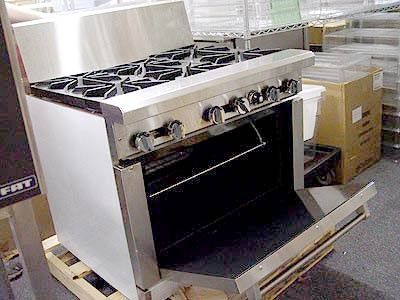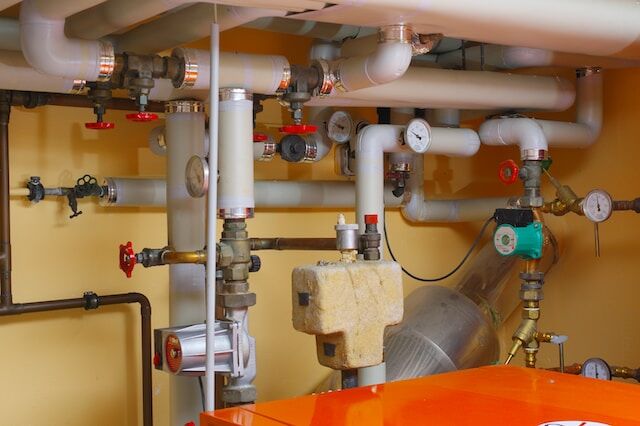Comprehending the Foundations of Home Plumbing: A Beginner's Primer
Comprehending the Foundations of Home Plumbing: A Beginner's Primer
Blog Article
How do you really feel on the subject of Plumbing Basics For Every Home: The HomeTriangle Guide?

Plumbing is an important aspect of any kind of home, responsible for supplying clean water for drinking, food preparation, and showering, in addition to getting rid of wastewater securely. Understanding the essentials of home plumbing is crucial for every single homeowner to make sure correct maintenance, troubleshooting, and, if essential, repair work. In this beginner's guide, we'll cover the fundamental ideas of home plumbing to assist you come to be much more familiar with just how it functions.
Supply Of Water System
The supply of water system brings tidy water into your home from a community water source or an exclusive well. It contains a main water line that attaches to your home's plumbing system, normally located underground. A water meter gauges the amount of water consumed, while a shut-off shutoff allows you to regulate the circulation of water into your home.
Plumbing Fixtures
Plumbing components are devices that supply water to different parts of your home and consist of sinks, faucets, commodes, showers, tubs, and appliances such as dish washers and cleaning devices. Each component is linked to the water supply system by means of pipes and installations and may have its shut-off shutoff for maintenance or emergency situations.
Water Heating Unit
The water furnace is accountable for home heating water for domestic usage, including showering, food preparation, and cleansing. Typical kinds of hot water heater include tank-type hot water heater, tankless (on-demand) water heaters, and heat pump hot water heater. The water heater is connected to the water system and supplies warm water to plumbing components as needed.
Water drainage System
The drainage system eliminates wastewater from your home and brings it away to a sewage therapy facility or septic tank. It includes a network of pipes, installations, and fixtures that transport wastewater from plumbing components to the main drain line or septic system. Proper drainage is essential to prevent clogs, back-ups, and sewage leaks.
Ventilation System
The air flow system aids keep correct air pressure and avoid sewer gases from entering your home. Vent pipes, additionally known as vent heaps, expand from plumbing fixtures to the roof, allowing drain gases to get away safely outdoors. Ventilation pipes likewise permit air to enter the drainage system, facilitating smooth wastewater circulation and stopping suction or vacuum cleaner results.
Common Plumbing Tools
Having the right tools available is necessary for performing basic plumbing repair services and maintenance tasks. Usual plumbing devices consist of adjustable wrenches, monkey wrench, pliers, pipeline cutters, hacksaws, plungers, augers (or drain serpents), and Teflon tape. Having these tools readily available can help you tackle small plumbing problems efficiently.
Standard Plumbing Repairs
While some plumbing fixings may call for specialist aid, several common issues can be resolved with standard do it yourself techniques. Learning just how to take care of a leaking faucet, unblock a drainpipe, replace a bathroom flapper, or fix a leaking showerhead can save you money and time on plumbing repair services.
Final thought
Comprehending the essentials of home plumbing is crucial for each property owner to keep a risk-free, useful, and effective plumbing system. By familiarizing on your own with the water supply system, plumbing components, drainage system, air flow system, usual plumbing tools, and standard repair services, you can confidently attend to small plumbing problems and guarantee your home's plumbing system operates efficiently.
Plumbing Basics Guide for Homeowners
For many homeowners, the plumbing system can be a mystery with a lot of hidden perils. Since most of the pipes and connections hide behind fixtures, walls, or even underground, people may not get a chance to see how they work until they need to. However, learning the basics around the plumbing system is important for homeowners, especially if they want to perform DIY maintenance, repair, or upgrades. By exploring the system and learning the most common mistakes, people will better understand what they are looking at and how they can minimize the risk of damage.
Parts of the Home Plumbing System
Although homeowners may have a rough sense of how their plumbing is supposed to work, they may not know all the parts of the system. For example, when someone turns on a tap, they may not understand how the water arrives or what happens after it goes down the drain. People should familiarize themselves with various terms related to plumbing, including:
Pipes: Tubes allowing the free flow of water, usually made of metal or PVC Fittings: Connectors that enable pipes to change direction Valves: Parts that control the direction and flow of water Fixtures: Permanent pieces that hold or control water, like sinks or tubs Traps: Special bends in the plumbing to prevent sewer gases from escaping Filters: Devices to prevent certain kinds of waste from accumulating in the pipes Appliances: Equipment that uses water, such as a dishwasher or water heater Supply: How Homes Get Water
Most homeowners get their water supply from a municipal plumbing system. Others rely on well water, which must be pumped from a nearby well. In order to have access to water, homeowners must install a supply line underground. This line usually has a main shut-off valve and a specific amount of water pressure. From there, the supply line goes to the water heater for heating. The rest of the house has two supply lines: one for cold water and one for hot water. They often run together to each fixture and appliance.
Draining: Where Used Water Goes
Every fixture and appliance has a drainage system that connects to the home's drainage line. Certain rooms may also have a drain in the middle of the floor, in case of flooding or for cleaning. Each fixture has a trap that allows water and waste to pass through but doesn't allow sewer gases to return in the opposite direction. The pipes connecting the fixtures and the appliances connect to a branch pipe and eventually to a drain stack, which leads to the home's main drain line underground. That line connects to a septic system or to the municipal sewer system.
Venting: What Keeps Home Plumbing Running Smoothly
The decomposition of human waste can produce gases, which need proper venting in the home's plumbing system. Drain traps prevent the gases from pushing through the drain and into the home, but they don't provide ventilation. Ventilation is important because the accumulation of gases can cause glugging and slow the flow of wastewater out of the home's plumbing system. There are different types of vents that homeowners can consider. Most of the time, the vents connect to the vertical drain stacks and allow the gases to escape through a pipe leading directly to the roof.
Tools for DIY Plumbing
There are a variety of tools that homeowners can use for DIY plumbing projects. Some are related specifically to installation or repair, while others are typically used for general maintenance. Popular tools include:
Pipe wrench Adjustable wrench Sink wrench Pliers Plumbers putty Plumbers tape Hand auger Plunger Installing New Water Lines in a Home
Installing new water lines takes additional care, especially if people are only replacing parts of the line. As a general rule, experts recommend that homeowners consider starting with copper piping to run from the water main to the water heater. This part of the line usually requires a pipe that's three-quarters of an inch in diameter. If a copper pipe must connect to a galvanized steel pipe, place a rubber washer in-between. This will stop the pipes from reacting with each other.
From the water heater, people can use half-inch pipes to lead to various fixtures and appliances. They might choose from a variety of materials, like PEX or copper. For each step of the process, homeowners may want to test out the length with a dry fit. This term describes fitting the pipes together to confirm that they are the right size before applying glue, tape, or solder. The best approach to connecting the pipes depends on the material. People should investigate suitable connectors, especially if they are going to use multiple different materials together.

As a devoted person who reads on Understanding the Basics of Your Home's Plumbing System, I thought sharing that blog post was really useful. Sharing is nice. Helping people is fun. Thanks so much for your time invested reading it.
Schedule Service Pickup Report this page